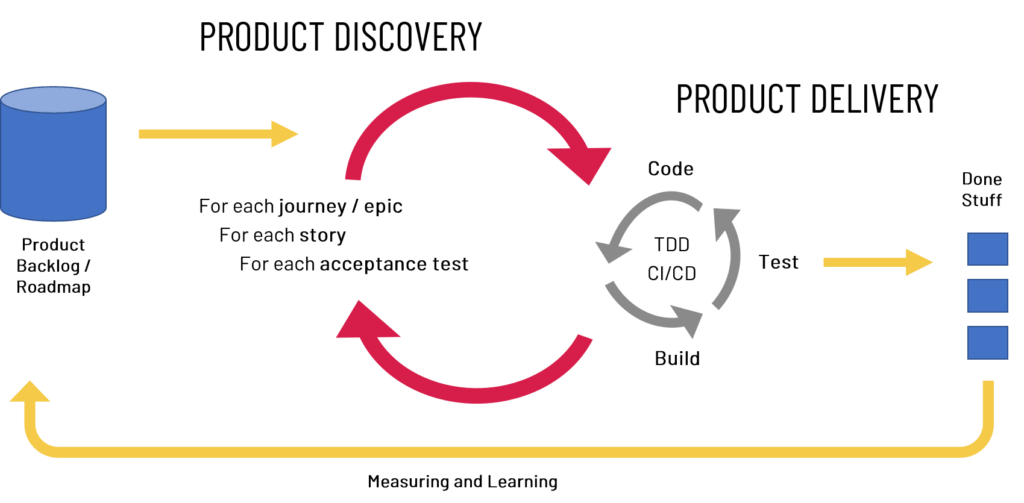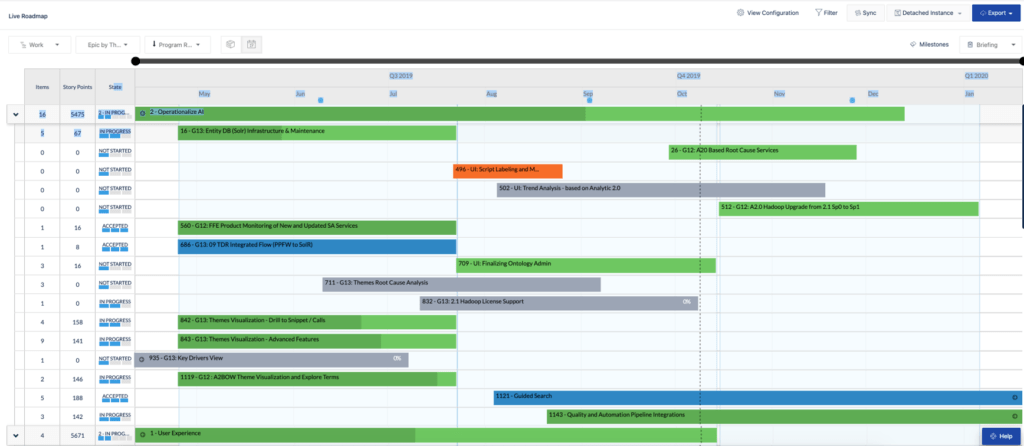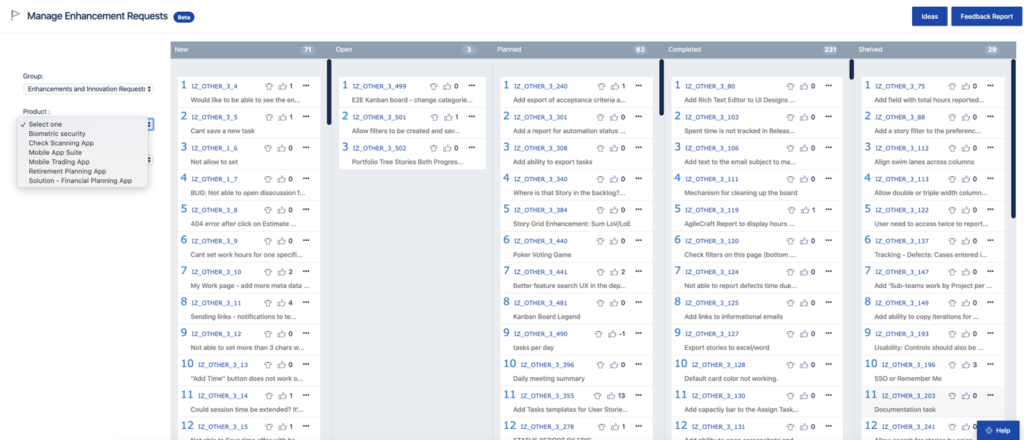Scaling Product Management in an Agile World with Atlassian Jira Align
In a previous post, we introduced you to Jira Align, the enterprise agile planning and portfolio management tool in the Atlassian suite of solutions. We’re extremely excited about this powerful tool and its seamless integration with Jira and other applications so many of our clients rely on. So, we’re diving a bit deeper into Jira Align with a series of four articles focused on some of the key user roles:
- Product Manager
- Program Manager
- Portfolio Manager
- Executive
In each case, we’ll explore the day-to-day challenges these individuals often face during their enterprise agile journey, and how Jira Align provides satisfactory solutions to those problems.
The Product Manager’s Role
The term product manager means a lot of things to different people, and there’s a good reason for that. Not only has the role evolved quite a bit in the 20+ years since it first started getting batted around, but it also changes based on the company in question, and even within organizations as they grow.
What is a product manager?
A product manager is responsible for understanding what the business needs and organizing the work to ensure delivery of highest value features.
Atlassian has defined the product manager role this way:
“A product manager is the person who identifies the customer need and the larger business objectives that a product or feature will fulfill, articulates what success looks like for a product, and rallies a team to turn that vision into a reality.”
What does a product manager do?
The following day-to-day responsibilities are shared by nearly all product managers:
Strategy / Planning
- Understanding customer needs
- Developing and communicating a product vision
Product Discovery
- Monitoring the market and developing competitive analyses
- Determining product feasibility
Product Development
- Aligning stakeholders around the vision for the product
- Validating solutions across all teams working on the product
- Refining and prioritizing the feature backlog
- Defining releases aligned to the roadmap
Product Delivery
- Accepting features
- Delivering product releases successfully
- Measuring impact of new product features
Product Management, then, is a function that represents the customer base and guides the product strategy through every step of the product lifecycle. As the “voice of the customer”, a product manager needs to be the customer’s advocate and ensure that what gets built will effectively address customer needs.
At the same time, the product manager needs to carefully balance that priority with the practical limitations of technology and business factors. It’s a challenging job to be sure.
The Product Manager as Tightrope Walker
Since the product manager’s core function requires so much balance, let’s think about her as a tightrope walker, high above the crowd below.
A tightrope walker has a very thin rope to walk on, and there are myriad distractions and other factors that could quickly turn an impressive feat of skill into a tragedy. Every step she takes, whether forward or backward, is a split-decision, but it’s also a calculated risk. So, too, is the decision to stand still when it’s necessary. But, in the end, the entire audience — not to mention the circus she’s working for and the tightrope walker herself — wants her to make it to the platform on the far side.
In this illustration, the tightrope walker is the product manager and the tightrope is the product lifecycle. It has a beginning (strategy and planning) and an end (product delivery). However, the journey between requires quick decision making, calculated risks, and a lot of balance. The path isn’t simple and linear like it would be on solid ground. Not only will the product manager sometimes need to take one step forward and two steps back, they’ll also occasionally need to stop and regroup (likely because outside forces have set the tightrope moving.) But, in the end, the skilled product manager brings the product across to the other platform — a successful release.
The Challenges Facing Product Managers Today
With that in mind, let’s look at some of the challenges the product manager may face on a typical day that could require a step backward or a strategic pause, and why balance is so difficult.
Disconnected strategies
The product lifecycle begins with the planning and strategy stages. Ideally, a product manager will already be intimately familiar with the overarching organizational and business goals they’re working toward. They can then seek out input from users or the market at large to cherry-pick problems they know can be solved by a viable new product or feature. Ideally, that product or feature falls perfectly at the intersection of what users need and value and what the organization is able to profitably produce.
Reality, though, is rarely that simple. Instead, product managers find that strategies and capabilities are often in a state of flux. Or, they’re simply not able to keep track of where priorities need to be (a problem that’s most common in larger enterprise organizations.) As a result, their initial explorations of user needs may be based more on educated guesses than on reliable data. The same issue plagues decision making throughout the product lifecycle.
Prioritizing and decision making on the fly
With so many moving parts involved in the product lifecycle, the product manager must make numerous important decisions every day. Again, ideally, these decisions will always be based on concrete accurate data and clear strategic direction from leadership, which make the best option crystal clear.
But, again, that’s rarely the case. Because of siloed work environments, poor communication, and the consistency of change, most product managers simply don’t always have access to all the information they need to make these important decisions.
Even when a decision is sound, they’re also facing the difficulty of what veteran product management coach, Anne Steiner, calls, “influencing without authority”. That’s because, “you are not actually managing the team of people who design, build, test, and support your product. Anything you need to accomplish needs to happen through a process of influencing that action. It is definitely not as simple as just ordering it up.”
As they move ahead with planning, product discovery, and delivery, they find plans need to be routinely juggled and reprioritized to either keep a product moving forward or to determine a pivot is needed.
Like that tightrope walker, they may need to move forward, backward, or nowhere at all. Of course, the farther out they get on that rope, the more the rope bounces and swings, and the more dangerous it becomes.
How Jira Align Helps Product Managers
Jira Align includes a number of powerful features that do an amazing job of solving these common challenges for product managers in the enterprise environment:
Multi-tiered Roadmaps
Unlike the static product roadmaps most product managers are familiar with, Jira Align Roadmap functionality is a powerful, dynamic, highly visual tool for creating and updating this vital document. When planning, product managers can create work items (themes, epics, capabilities, and features) directly on the visual Live Roadmap, then drag and drop them across the timeline to adjust planned start and end dates. The Roadmap provides several view options including a “Group By” option, to view all work items together say, for a particular product, or aligned to a specific strategic theme. Columns and filters can be also configured to create custom roadmap views.
Jira Align Roadmaps reflect real-time progress to help with day-to-day monitoring and steering. The work is consistently pulled in from team tools to provide a dynamic and up-to-date view. Product Managers also have the ability to manually provide a color-coded subjective status on each roadmap item to reflect its health. So, for example, if a Product Manager sees that a feature is on track based on story acceptance, but she has spoken to the product owners and learned that the remaining story work is being deferred for teams to focus on break-fix work, then she can mark the feature as Orange – At Risk, or Red – Critical/Slip to indicate that there are challenges with getting the feature delivered on time.
Feature Backlog
Your feature backlog needs to be the single source of truth for ongoing, planned, and even unplanned product work. The backlog houses the work, which is documented, sized and prioritized for development teams. Brand new ideas that haven’t been fleshed out yet live here too. Product Managers are responsible for continuously refining the backlog to support continuous delivery.
When all this information is spread across multiple spreadsheets or other tools, it becomes a practical nightmare to keep the backlog effectively groomed and actionable. Even worse, if the product backlog is separated from enterprise strategy data, it will be difficult for product management to keep in alignment with that strategy. It’s cumbersome and time consuming to keep the data updated with work in progress, often overwhelming product managers with project management tasks.
In Jira Align, all work is connected, automating much of this project management, freeing up product managers to focus more on product vision and strategy. The feature backlog housed in Jira Align is a stack-rank prioritized list with easy drag-and-drop functionality. The grid can be configured to show columns to aid in prioritization, such as program, strategic driver, WSJF, and t-shirt sizes. Page filters allow product managers to quickly view subsets of data that are of interest to them.
And, if the strategy has changed and initiatives have been reprioritized, Jira Align users do not have to go in and manually reorder features accordingly. They can choose to “Pull Rank” to automatically rearrange features respective to the new priority assigned to the parent item.
Defining the Product Landscape
In order to really represent the voice of the customer, a product manager must understand who the customer is and what other competing options exist. Jira Align provides the ability to define robust personas for each product – who is the typical customer? What traits and demographic characteristics best describe them? What delights them? What are their needs and goals of using the product?
Similarly, a list of product competitors can be created, and pertinent market research documented. This will enable product managers to focus on creating differentiating features that will capture market share. Jira Align provides a centralized view of all of the product management data for optimal visibility for stakeholders across the organization.
For more information about Jira Align, including more details about why product managers love it, watch our free webinar, Discover Jira Align.
Inthe next article in this series, we’ll explore the program manager’s role and how Jira Align helps make his/her lives easier.







